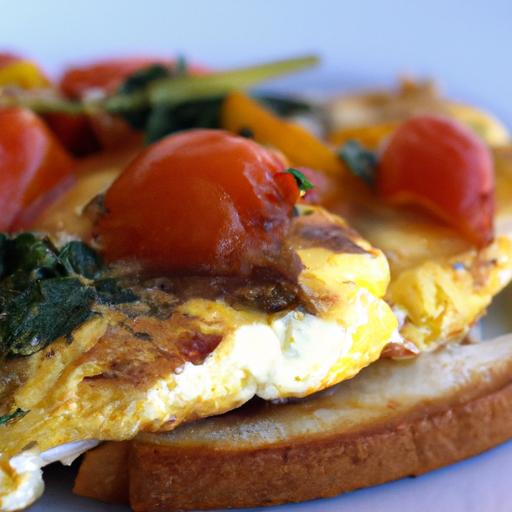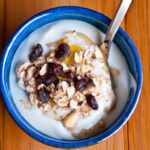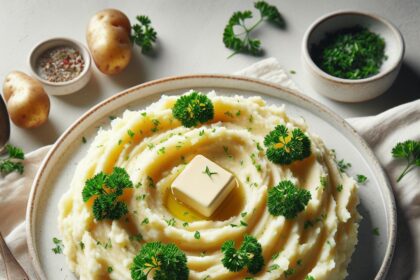There’s a special kind of disappointment that comes with reheated eggs-the once-fluffy, silky texture turns rubbery and dry, like a culinary ghost of breakfast past. But what if your leftover eggs could bounce back, soft and tender as if freshly cracked? Welcome to the art and science of the Bounce Back Breakfast. In this article, we unlock the secrets to transforming reheated eggs from a textural tragedy into a morning marvel, proving that with the right techniques, even leftovers can reclaim their rightful glory on your plate. Say goodbye to disappointing reheats and hello to eggs that feel freshly made-every single time.
The Science Behind Egg Texture Changes After Reheating
Bounce Back Breakfast: Making Reheated Eggs Tender Again starts with understanding the delicate nature of egg proteins and how heat affects their texture. When eggs are cooked, the proteins denature and coagulate, transforming liquid egg whites and yolks into a firm, structured form. However, reheating eggs causes these proteins to tighten further and expel moisture, leading to rubbery, dry textures that often feel less appealing. This firming effect results from additional heat triggering the contraction of protein networks, making reheated eggs lose their initial soft, creamy tenderness.
Techniques to Restore Tenderness in Leftover Eggs
To revive the delightful softness of eggs after reheating, gentle heat application and moisture reintroduction are essential. One effective method is reheating eggs on low heat with a splash of water, milk, or cream. This creates steam that rehydrates the proteins, helping soften their texture. Covering eggs while reheating traps steam, making the process even more effective. Another expert tip is to whip leftover scrambled eggs briefly before reheating to break up protein clumps, enhancing fluffiness. Alternatively, a quick microwave reheat in short bursts stirred intermittently prevents overheating and toughening.
Best Cooking Tools for Reviving Reheated Eggs
Choosing the right tools optimizes reheating success. A nonstick skillet is perfect for stovetop renewal-heat slowly, add moisture, and gently stir to restore softness. A microwave with adjustable power settings is also ideal for fast, controlled reheating with periodic stirring. For the steam method, a lidded saucepan or covered glass container helps trap moisture effectively. Additionally, using a silicone spatula prevents scratching cookware while delicately folding eggs back to a tender consistency.
Flavor Enhancements to Complement Bounce Back Breakfast Eggs
Once eggs regain their tender texture, flavor additions can elevate the experience. A sprinkle of fresh herbs like chives, parsley, or dill adds brightness and contrast. A dash of creamy cheese-think crumbled feta, shredded cheddar, or goat cheese-melts beautifully into softened eggs, enriching mouthfeel and taste. For a subtle zing, a few drops of hot sauce or a pinch of smoked paprika can awaken flavor layers. Finally, a drizzle of high-quality olive oil or a pat of herb butter adds luscious richness, creating a perfectly balanced breakfast dish that’s both comforting and delicious.
Prep and Cook Time
Prep Time: 5 minutes
Cook/Reheat Time: 5-7 minutes
Yield
Serves 2
Difficulty Level
Easy
Ingredients
- 4 large eggs, cooked and refrigerated (scrambled, fried, or soft-boiled)
- 2 tablespoons whole milk or cream
- 1 tablespoon unsalted butter
- Salt, to taste
- Freshly ground black pepper, to taste
- Chopped fresh herbs (chives, parsley, dill), optional
- Grated cheese such as cheddar or feta, optional
- A dash of hot sauce or smoked paprika, optional
Instructions
- Prepare the eggs. Remove leftover eggs from the refrigerator to bring closer to room temperature (about 5 minutes). This helps them reheat evenly without overcooking.
- Heat your pan. In a nonstick skillet over low heat, melt the butter slowly until it foams gently.
- Add eggs and milk. Add the chilled eggs to the skillet. Pour in the milk or cream. The added liquid helps create steam to tenderize the eggs during reheating.
- Reheat gently. Using a silicone spatula, gently stir the eggs, folding them slowly while covering the pan with a lid. Sauté until warmed through but still moist and fluffy-about 5 minutes.
- Season and enhance. Season with salt and pepper. If using, fold in grated cheese and sprinkle fresh herbs just before finishing. Stir to combine and melt cheese lightly.
- Serve immediately. Plate the tender eggs and add a final flourish with a dash of hot sauce or smoked paprika to brighten flavor.
Chef’s Notes
- For microwave reheating, place eggs in a microwave-safe dish with a splash of milk, cover with a microwave-safe lid or wrap, and heat in 15-second bursts, stirring in between.
- If eggs start to dry out, add an extra splash of milk or a knob of butter during reheating to maintain moisture.
- Reheating scrambled eggs gently on the stovetop preserves their fluffy texture better than a high-heat microwave rush.
- Try substituting milk with unsweetened plant-based alternatives like oat or almond milk for a dairy-free option.
- Leftover eggs can be mixed into savory breakfast bowls or sandwiches, enhanced with veggies, avocado, and fresh salsa.
Serving Suggestions
Present your bounce back eggs atop toasted sourdough slices with a scattering of fresh herbs and a light drizzle of olive oil. Pair with roasted cherry tomatoes or a crisp side salad for a balanced meal. For a heartier option, serve with crisp bacon or sautéed mushrooms. Garnish with microgreens or edible flowers to elevate visual appeal and add fresh flavor brightness.
| Nutrient | Per Serving |
|---|---|
| Calories | 210 |
| Protein | 14g |
| Carbohydrates | 2g |
| Fat | 16g |

For more tips on perfect egg dishes, check out our Ultimate Scrambled Eggs Guide. Dive deeper into the protein science behind eggs at NCBI – Egg Protein Structure.
Q&A
Q&A: Bounce Back Breakfast – Making Reheated Eggs Tender Again
Q1: Why do eggs lose their tenderness when reheated?
A: Eggs, when cooked, form a delicate network of proteins. Reheating causes these proteins to tighten and squeeze out moisture, turning eggs rubbery and dry. That’s why your lovingly made scrambled eggs can feel like shoe leather after a warm-up!
Q2: Is it even possible to bring reheated eggs back to that fresh, tender state?
A: Absolutely! Think of it as a culinary comeback story. By controlling temperature and moisture, you can coax eggs to regain their soft, creamy texture. It’s all about gentle warmth and smart hacks.
Q3: What’s the best method to reheat eggs without turning them tough?
A: The secret lies in low-and-slow heating. Use a microwave at 50% power in short bursts or reheat on the stovetop over low heat with a splash of milk or water. Covering the pan helps trap steam, which gently tenderizes the eggs as they warm.
Q4: Can adding liquids really improve reheated eggs?
A: Yes! Adding a little milk, cream, or even water helps reintroduce moisture lost during the initial cooking and reheating process. This dampens the firm protein network, softening the texture and bringing back that silky mouthfeel.
Q5: Are certain types of eggs better candidates for reheating?
A: Soft scrambled or lightly cooked eggs tend to rebound better than overcooked or hard-boiled ones. However, with the right technique, even hard-boiled eggs can be revitalized – for example, by slicing and warming them gently with a damp paper towel in the microwave.
Q6: Any handy tips for storing eggs to ensure they bounce back nicely?
A: Store eggs in airtight containers with a small moisture source-like a damp paper towel-to prevent drying out in the fridge. This helps retain their natural tenderness, giving you a softer starting point for reheating victories.
Q7: Can I use this bounce-back technique for egg dishes like quiches or frittatas?
A: Definitely! Quiches and frittatas benefit from the same low-heat, moisture-friendly methods. Cover with foil, heat slowly in the oven, and don’t forget to add a splash of cream or broth if they seem dry-tenderness restored, slice by glorious slice.
Q8: What’s the biggest mistake to avoid when reheating eggs?
A: Overheating is the enemy! High heat makes eggs tough and rubbery faster than you can say “bounce back.” Patience and gentle warmth are your allies. Remember, eggs are delicate divas-they perform best under tender care.
Q9: How can I creatively enjoy reheated eggs after making them tender again?
A: Once tenderized, toss them into breakfast burritos, mix into fried rice, or layer atop avocado toast. Their renewed creaminess elevates simple dishes into a breakfast encore worth savoring.
With these bounce-back strategies, your reheated eggs can reclaim their rightful soft and supple glory-because every breakfast deserves a second chance to shine!
Closing Remarks
In the quest for a perfect breakfast, few things are as disappointing as reheated eggs that turn rubbery and tough. But with the right techniques and a little culinary know-how, you can transform those leftovers into tender, fluffy bites that rival fresh-cooked eggs. Whether you prefer gentle steaming, the magic of a microwave bath, or a quick skillet revival, the “bounce back” breakfast is well within reach. So next time you find yourself facing cold, overcooked eggs, remember: reheating doesn’t have to mean sacrificing texture. With these tips in your kitchen arsenal, your mornings can be just as enjoyable-and just as delicious-as the very first sunny-side-up. Here’s to making every breakfast bounce back better than ever!








